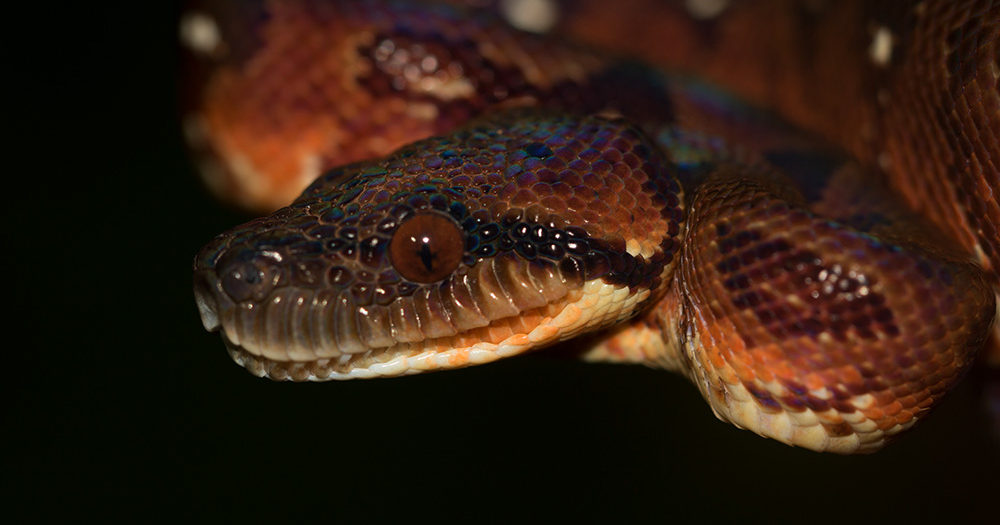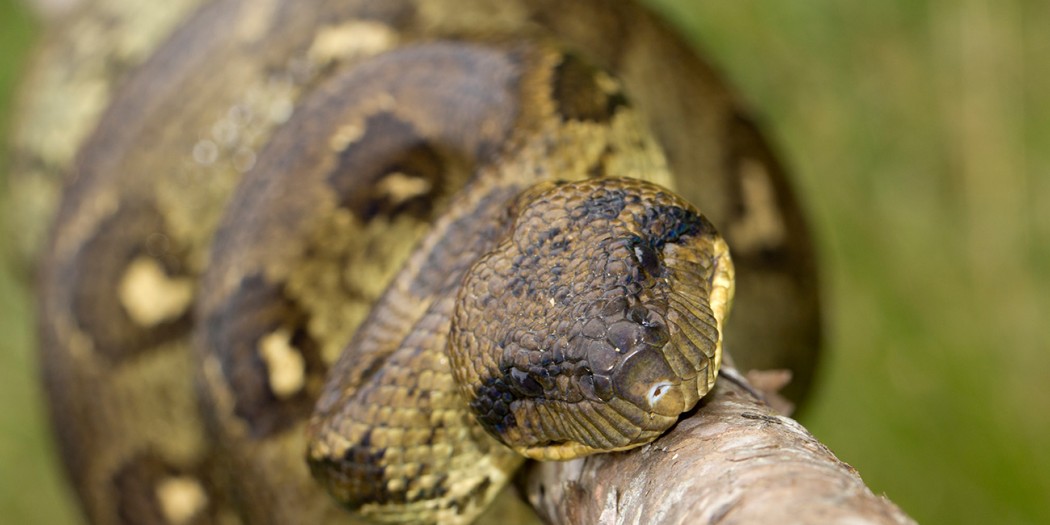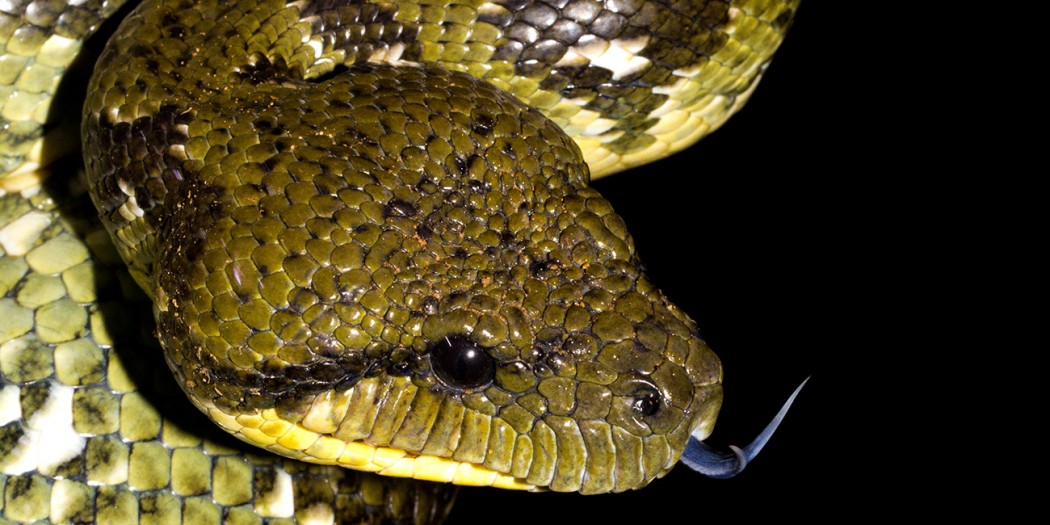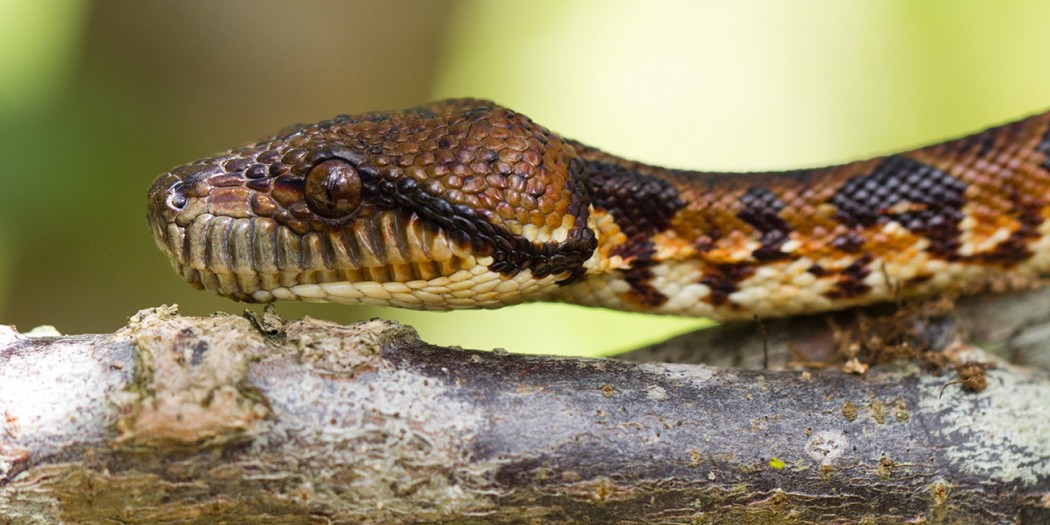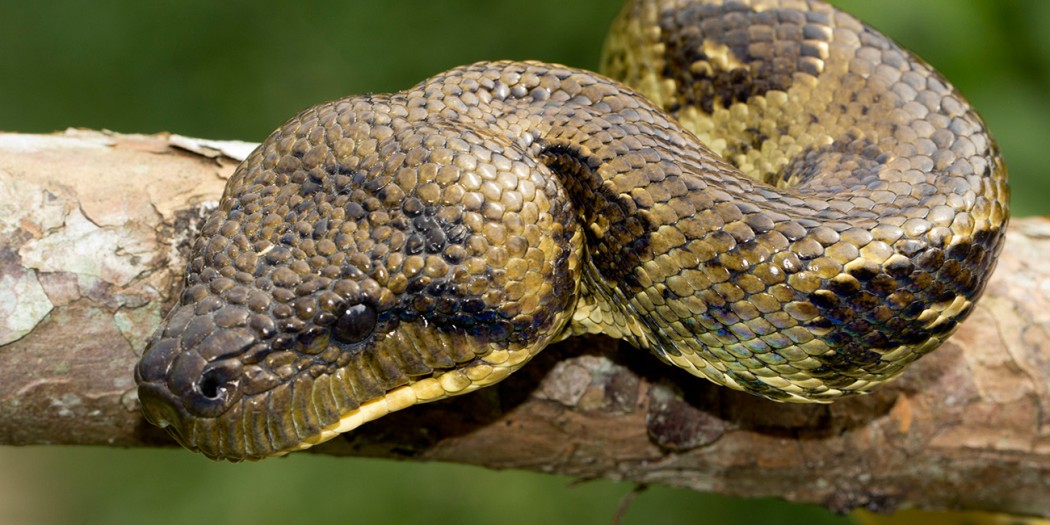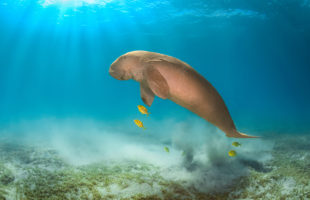Saying of many ages and fairy tales she has a dubious reputation, but actually she is a fascinating forest dweller: The Malagasy Tree Boa. There are two species of Tree Boa in Madagascar. The species Sanzinia madagascariensis lives mainly in the rainforests of the east coast of Madagascar. The second species, Sanzinia volontany, has conquered other habitats such as the hot, dry southwest and south of the country. Even on some islands as well as in the Mascarenes and La Réunion, the Tree Boa has already made it. It copes surprisingly well with the destruction of habitats in Madagascar. It can even be found in plantations and near human dwellings. This is why the IUCN recently classified it as “least concern”, i.e. not endangered.
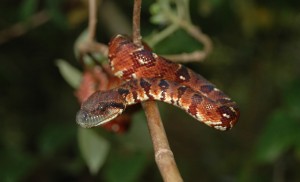
With an average length of one and a half meters, Malagasy Tree Boas reach a moderate size. So far no animal of this species has been scientifically documented that was longer than 1.85 m, although many travelers tell of lengths up to 2.50 m. In Madagascar, however, these sizes probably belong more in the realm of legends. The Malagasy Tree Boa was completely described in 1844 in Paris by the French zoologist André Duméril and his assistant, Gabriel Bibron. In 1849 the English zoologist John Gray cataloged the collection of the British Museum there and put the species originally called Xiphosoma madagascariensis in the genus Sanzinia. This is still valid today. In 2007, the two German biologists Frank Glaw and Miguel Vences noticed during genetic investigations that there are two subspecies of the Malagasy Tree Boa. According to recent research, both have species status. Sanzinia madagascariensis is a little smaller and always wears a green color dress. Sanzinia volontany (Malagasy for brown) is mostly brown-yellow. Both have in common the wide stripe pattern with black interior and white or beige rings around it.
The Malagasy Tree Boa is actually a tree inhabitant, but it only uses trees to rest during the day. At night she hunts mainly on the ground. For humans, the snake is completely harmless. It feeds on rats, mouse lemurs and other small mammals, which it detects at night by means of its heat-sensitive pit organs. However, an occasional frog or young birds are not spurned. The boa grabs the prey with her teeth and wraps her body around it at lightning speed. When the prey is dead, she releases – like all snakes – her lower jaw and devours it.
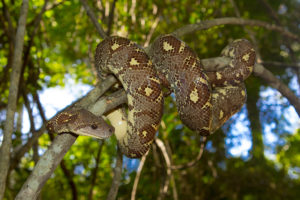
At the beginning of the rainy season, the boas look for a partner to mate. When males meet, they try to drive away their competitors with persevering battles. They get entangled, push each other to the ground with their bodies and heads and very rarely bite each other. The successful opponent may mate – he has two so-called hemipenes to choose from, an evolutionary adaptation to the vulnerability of this organ. If mating was successful and the female is pregnant, she shows this with a different body color: She becomes ever darker, partly almost black. After five to eight months, the female gives birth to four to twelve living young – in particularly good years are up to 19. the small snakes are immediately on their own and bring along already at their birth everything that one needs for survival in the wilderness. To protect them from predators, the young Malagasy Tree Boas move exclusively in trees and avoid the ground as best they can. In addition, they carry a red coloration, which loses itself only with one to two years in the course of the sexually mature. Nevertheless, many of the small snakes are eaten by birds of prey and other predators – that is the course of nature. Like all reptiles, the boa grows for life, although only millimeters wise as an adult. That is why she has to get rid of her old skin at regular intervals.
With the wide distribution of the Malagasy Tree Boa on its home island and its good adaptability, it can be expected that the species will be admired by travelers for many years to come. If you want to find them, you should look along streams, small rivers or simply near the nearest waste pit – where small mammals move because of fruit and meat remains, you can usually also find Malagasy Tree Boas, too.
 MADAMAGAZINE Your Magazine about Madagascar
MADAMAGAZINE Your Magazine about Madagascar

